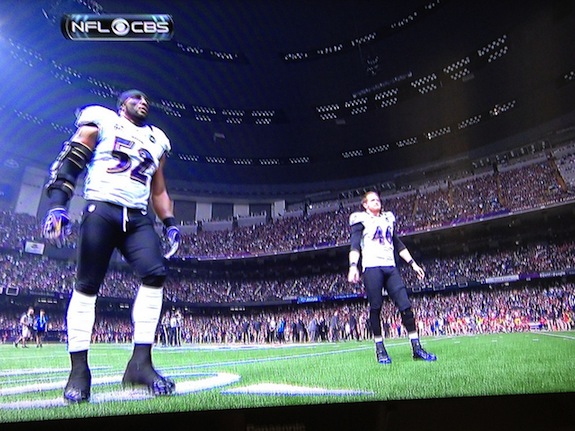Why Did the Lights Go Out in the Superdome?
What actually caused the power outage in the 73,000 seat Superdome? Well, it’s unclear

Image: Bert Kimura
With 13:22 left to play in the third quarter of last nights Super Bowl, about half of the lights in the stadium went out. Confusion ensued, along with anger and frustration from the Ravens, whose momentum was noticeably halted when play resumed. But what actually caused the power outage in the 73,000 seat Superdome? Well, it’s unclear.
CBS News says that “officials revealed that an ‘abnormality’ in the power system triggered an automatic shutdown, forcing backup systems to kick in. But they weren’t sure what caused the initial problem.”
And it wasn’t just the lights that dropped out. Escalators in the stadiums stopped working, credit card machines dropped, and communication between coaching staffs, powered by radio, stopped working.
The company that provides power to the stadium, Entergy New Orleans, said in a statement that their feeders were working just fine, but that their system, which is set up to detect some sort of abnormality, automatically shut down. The best information right now has it that the problem “appeared to originate where Entergy’s line and the Dome’s electrical system meet.”
The Atlantic says that the blackout shouldn’t really be a surprise. There are lots of reasons why a Super Bowl might overload a stadium’s electrical capacity:
Here’s the thing: NFL football games drink up a lot of electricity, and blackouts during games are not unheard of. Just two years ago, a game between the 49ers and the Steelers was delayed twice due to power outages, after a transformer exploded just outside of the stadium. It sounds like that there was a similar overload at the Superdome this year. “This is a situation totally out of our control. We have been told that there was a blown transformer,” said presenter Mike Chapman. “The safety lights are on but our cameras are now up and running again.” A few minutes later, the lights flickered back on, and the teams started getting ready to start the game. More details trickled in that suggested it was indeed an “outside power surge“ that caused the power outage. By the time game play started over half an hour after half the Superdome went out, it remained unclear what caused the surge. It could’ve been lightning, but again, the weather was nice in New Orleans. More likely, is that the many very high-power electrical devices in the stadium switched on or off, sending a surge of electricity through the wires, overloading a circuit or exploding a transformer. The compressor of the Superdome’s climate control system or Beyoncé’s light-heavy halftime show, for instance, could cause such a surge.
Some businesses cashed in on the darkness, taking the opportunity to advertise their products further. Like Oreo, who Tweeted a picture of a cookie saying “you can still dunk in the dark.” Here’s NPR on the markting move:
New Orleans, once a frequent Super Bowl host, had a lot riding on the logistical success of this game. ESPN writes:
New Orleans was once a regular in the Super Bowl rotation and hopes to regain that status. Earlier in the week, the host committee announced it will bid on the 2018 Super Bowl, which would coincide with the 300th anniversary of the city’s founding.
The 38-year-old Superdome has undergone $336 million in renovations since Katrina ripped its roof in 2005. Billions have been spent sprucing up downtown, the airport, French Quarter and other areas of the city in the past seven years.
Since the 49ers’ come-back flagged and the Ravens still won out, this won’t be remembered as the infrastructure problem that swung a Super Bowl. And NFL Commissioner Roger Goodell has already said the outage won’t hurt the city’s chances when it bids for the 2018 game. But if the city does host another big game that year, officials will certainly want to take extra measure to ensure that New Orleans doesn’t become the city that can’t make it through a Super Bowl without blacking out.
More from Smithsonian.com:
The Super Bowl’s Love Affair With Jetpacks
The Super Bowl Goes Social
/https://tf-cmsv2-smithsonianmag-media.s3.amazonaws.com/accounts/headshot/Rose-Eveleth-240.jpg)
/https://tf-cmsv2-smithsonianmag-media.s3.amazonaws.com/accounts/headshot/Rose-Eveleth-240.jpg)